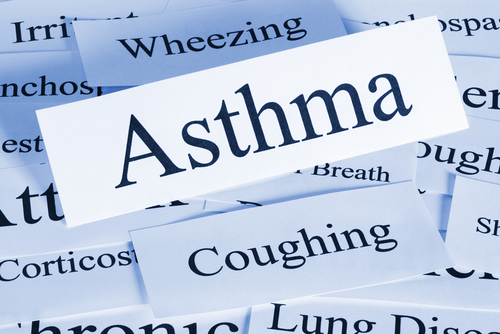Every day in America, 30,000 people suffer an asthma attack. Five thousand of them go to the emergency room, 1,000 are admitted to the hospital—and 11 will die. Although those numbers include asthma sufferers of all ages—children are especially susceptible to asthma-causing chemicals—a significant number are workers. As many as 15 percent of adults develop asthma because of workplace exposures, according to the American Thoracic Society. Many more who develop asthma outside the workplace find their condition worsened by workplace exposures.

Part of the problem stems from simply being indoors. The U.S. Environmental Protection Agency (EPA) has found that indoor environments may have pollutant levels two to five times higher, and occasionally more than 100 times higher, than outdoor levels—and Americans spend approximately 90 percent of their time indoors, breathing these concentrated pollutants.
Employers should be concerned not only with preventing workers from developing occupational asthma, but also with controlling workplace air quality so it does not exacerbate asthma in workers with a preexisting asthma diagnosis.
Asthmagens in the workplace
In 2012, design firm Perkins+Will prepared a report for the National Institutes of Health on substances that cause or aggravate asthma in the built environment. They identified 374 such substances, some commonly found in buildings where the enclosed environment concentrates them.
Great news! BLR’s renowned Safety.BLR.com® website now has even more time-saving features. Take our no-cost site tour! Or better yet, try it at no cost or obligation for a full 2 weeks.
Indoor substances, objects, and systems linked to asthma include:
- Building materials, such as paints, insulation, and plastics, as well as textiles like carpets and curtains;
- Furnishings, especially plastics, or furnishings with plastic or resin coatings;
- Cleaning products, especially those with disinfectant properties;
- Personal care and hobby products ranging from perfumes to glues; and
- Central heating and cooling systems and humidification devices, which are prone to biological contamination (bacteria, viruses, and molds).
Naturally, workers who manufacture these products can be exposed to high levels of asthmagens during the manufacturing process. What employers may not realize, though, is that workers in environments where these products are used are also at risk because these chemicals continue to be released from the products at the point of final use.
Want to receive Continuance of Certification (COC) credit? Here’s how! Join us on November 12th for an in-depth webinar on an overview of the potential safety risks and liability associated with hiring temporary workers.
High-Risk Workplaces
Certain employees are more frequently exposed to asthmagens at work, either during the manufacture of products or during their final use, including workers in:
- Agriculture. Agricultural workers encounter many biological asthmagens, including insect proteins, pollens, organophosphate insecticides, chloramides, sulfones, and mites.
- Adhesives manufacturing. Workers producing adhesives encounter acid anhydrides, aliphatic amines, polycyclic compounds, diisocyanates, methyl methacrylate, and cyanoacrylates.
- Plastics manufacturing. Aliphatic amines, polycyclic compounds, acid anhydrides, diazonium salts, formaldehyde, methyl methacrylate, diisocyanates, trypsin, bromelin, polyvinyl chloride, azodicarbonamide, styrene, polypropylene, and dioctyle phthalate are common asthmagens encountered in plastics manufacturing.
- Health care. Glutaraldehyde, latex, formaldehyde, methyl methacrylate, cyanoacrylates, quaternary ammonium compounds, methyldopa, penicillins, psyllium, hexachlorophene, and chlorhexidine threaten the respiratory systems of healthcare workers.
Tomorrow, we’ll look at ways to achieve cleaner indoor air in your workplace.

I agree that indoor air quality can be a factor in employees’ health, comfort, well-being, and productivity. I wrote an article on “8 Great Ways to Improve the Indoor Air Quality in Your Office or Home.” Feel free to read it on my company’s Safety Blog: http://www.safetytrainingservices.net/sts-blog/bid/356079/8-Great-Ways-to-Improve-the-Indoor-Air-Quality-in-Your-Office-or-Home